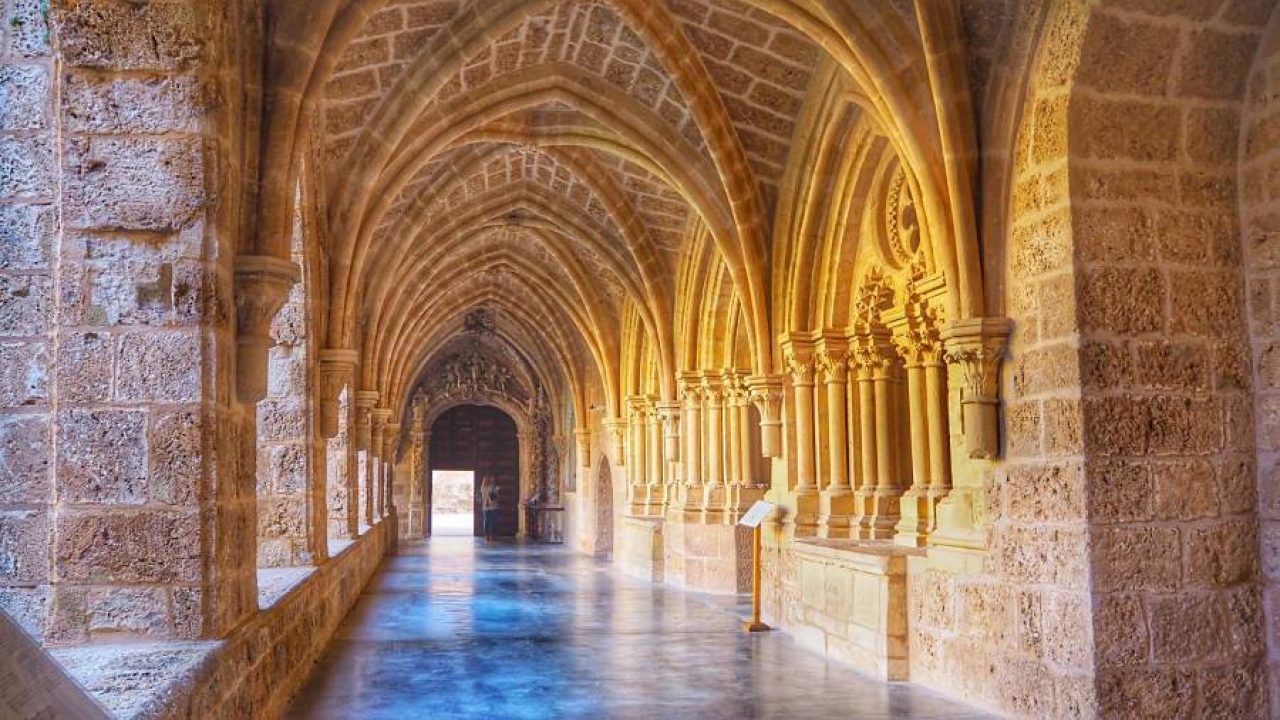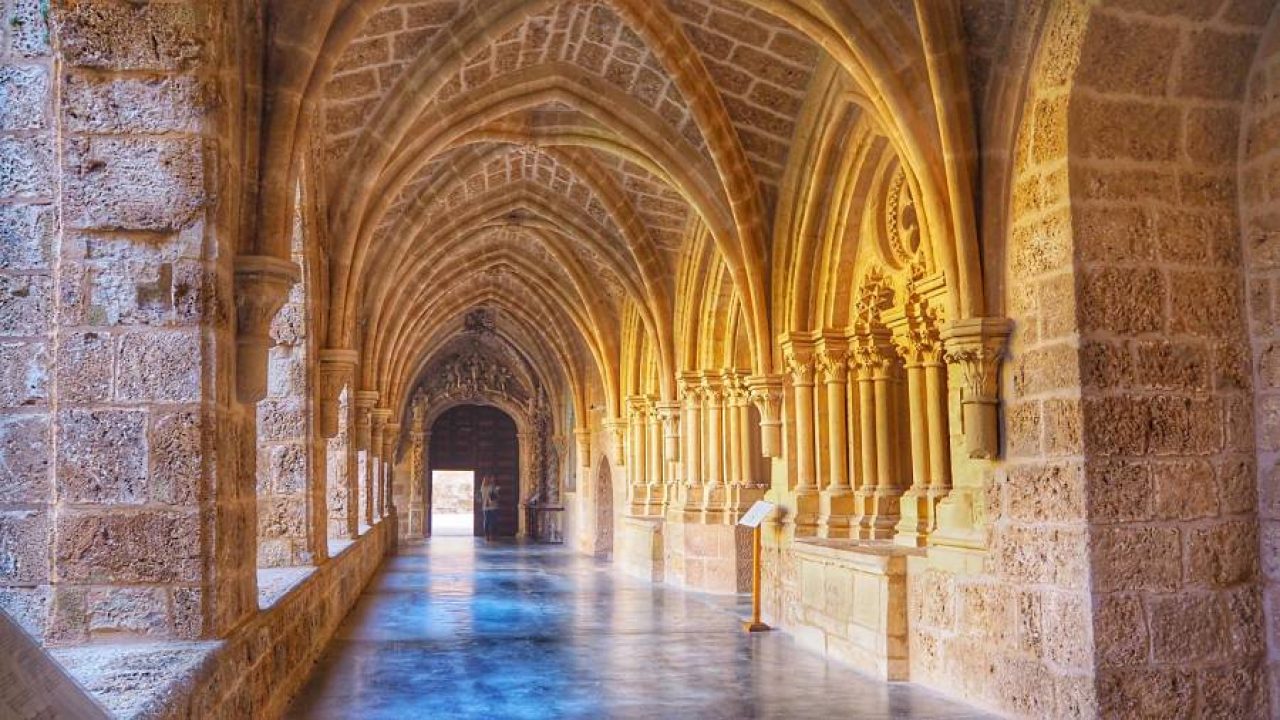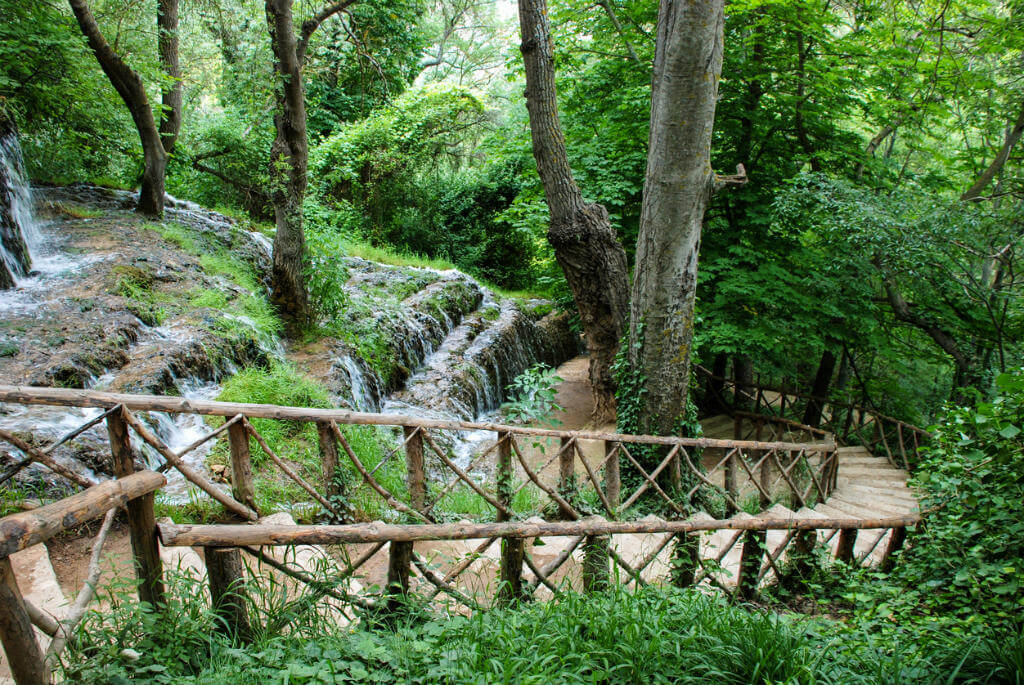
Do you love watefalls and hiking then this is the place for you.
Monasterio de Piedra (Stone Monastery) is a monastery, hotel and park complex in the Iberian System mountain ranges, near Nuévalos, province of Zaragoza, Aragon, Spain. The monastery was founded in 1194 by Alfonso II of Aragon, with thirteen Cistercian monks from Poblet Monastery, in an old castle next to the Piedra River, and was dedicated to St. Mary the White (Santa María la Blanca). On February 16, 1983, the entire complex was declared a national monument. In the village of Nuévalos, a few kilometres from Calatayud, the famous Monastery of Piedra is located, an old Cistercian monastery inside a nice natural park full of waterfalls, water springs and caves. It is one of the most beautiful and visited sceneries in Aragón.
This natural park is a peaceful place, the best one to relax, basking around with the sound of water descending the different waterfalls. The most famous is Horse Tail. In the inside there is a large natural cave with stalactites formations. Contrasting the waterfalls, the quiet Mirror Pool waters can be admired next door.
The history of Monasterio De Piedra.

The Monasterio de Nuestra Señora de Piedra (Monastery of our Lady of Stone) is located besides the Piedra River. It is undoubtedly one of the most visited places in Aragon because of the many gardens and waterfalls created by the river located in the Piedra Canyon. This attraction has become a place of rest and recreation for tourists.
The Monasterio de Piedra is in one of the most barren areas of Spain. Its origins date back to 1194, when Alfonso II of Aragon, and his wife Doña Sancha donated an old Moorish castle to the monks of Poblet to build a monastery and to establish the Christian faith in the area.
The Monasterio de Piedra is in a mountainous region, at around 736 m above sea level in the Iberian System. The traditional access road to the monastery follows the Piedra River, starting from the Nuevalos village. Along the old path are the masonry ruins of a watermill or wheel. This beautiful spot is often used by the Cistercians as inspiration for their work and prayer. The Monasterio de Piedra was founded by Alfonso II in 1194 with monks from Poblet. The work started in 1195 and was completed in 1219. The monastery lies in the confluence of the Ortiz and Piedra Rivers, in a land of thermal springs, such as Alhama and Jaraba. Followers of Islam sought to establish their cities on the rivers banks because their economy was based on agriculture, which was performed through laboring irrigated lands. This is why they chose to live on low lands and did not effectively occupy the higher areas of the Pyrenees, where they merely controlled the traffic of people and goods through fortified steps at the entrance of the valleys. This is also the reason why the noble and Christian clergy, who would be the most likely to suffer because of the arrival of Islam, had to settle on the northern regions of the Iberian Peninsula, where they began to set up churches and monasteries that would sustain those early Christian communities.
Facts about the park.

The monastery is located near the Piedra River Canyon, home to many species of birds, damselflies, trout, and endangered fish like the South-west European nase and an endangered species of barbel. The canyon itself includes a network of mossy, garden-like caves (natural and man-made), waterfalls and lagoons that contrast with the otherwise dry hills of southern Aragon. The tallest waterfall is «Horsetail» (Cola del Caballo), more than fifty meters high. The dissolution and precipitation of local limestone has created numerous rivulets, springs, and Karst topography. The Piedra River meanders around a mountain known as The Ram. In 1959, a dam was constructed across the river, which created the 1300 acre La Tranquera Reservoir, flooding part of the canyon, some of the best local farmland, and several villages. The roofs of some drowned houses can still be seen when the water levels are down. The reservoir provides domestic water supply, irrigation and electrical energy. The region is a popular tourist destination for hiking, camping, and water sports.
Places you should see in Monasterio de Piedra.
- Gruta IRIS,
- Edificio Diseminados, 19, 50210 Nuévalos, Zaragoza,
- https://goo.gl/maps/j7TxrCFvicq17E816
- Cascada La Caprichosa,
- 50210, Zaragoza,
- https://goo.gl/maps/ZDbXxiDiebm3JDCPA
- Cave of Wonders,
- 50236 Ibdes, Zaragoza,
- https://goo.gl/maps/WRYUQykvrcsSN5qg9
- Cascada Trinidad
- A-202, 50210 Nuévalos, Zaragoza,
- https://goo.gl/maps/rYZKkFrvbY5hA2S69
- La Paradera,
- Calle Río Alberche, 50236, Zaragoza,
- https://goo.gl/maps/RRGGgZ1dLxSLBwhY6
- Wine Museum,
- Edificio Diseminados, 19, 50210 Nuévalos, Zaragoza,
- https://goo.gl/maps/FBrgBpQ5pUsLGTBt6

 Any question?
Any question?